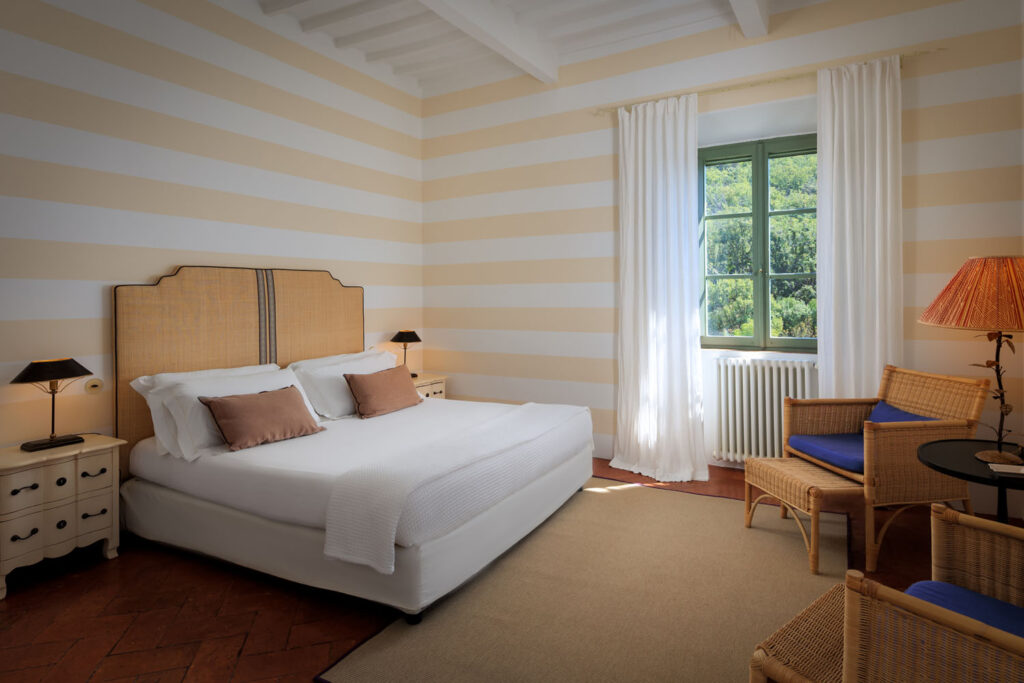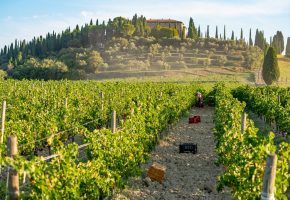Monte Amiata
DON’T MISS
Santa Fiora. One of the most beautiful villages in Italy. In Palazzo Sforza Cesarini, formerly the fortress of the Aldobrandeschi family and rebuilt in the 1500s as a stately home for the Sforza family who had inherited the feudal property through marriage, is the Museum of Mercury Mines of Monte Amiata with an important collection of minerals and an overview of the means and techniques used to extract this mineral.
Abbadia San Salvatore. The heart of this village is the ancient abbey founded by the Lombard king Rachis in the middle of the 8th century and which became an important seat of power throughout the entire medieval age. The current facade of the church dates back to 1035 with some restoration works carried out in the 1930s. Of particular interest is the crypt, supported by 32 columns and as many capitals, each one different from the other.
Monte Amiata is an ancient volcano, active between about 400,000 and 200,000 years ago and whose summit reaches 1,736 metres above sea level, the highest in Southern Tuscany. Rich in woods and springs, it has been inhabited since prehistoric times. Lithic tools of the Paleolithic Age have been discovered in the area of Castel del Piano. The presence of minerals attracted the people of the Eneolithic and Bronze Ages, and stone tools and deer antler hoes from ancient mining excavations were discovered in the area between the late 19th and early 20th centuries, when mining was intensely carried out. Axle storerooms, further evidence of Bronze Age metallurgical activities, have been found both on the Sienese side of the mountain, in the Val d’Orcia, and in the area of Santa Fiora on the Grosseto side. The local cinnabar was much sought after as a dye for ritual purposes from as far back as the Eneolithic Age.
In Etruscan times, the mountain was on the border between the two important centres of Chiusi and Vulci. Scarce traces of this era have been discovered, the most relevant near Seggiano, where two antefixes were unearthed, most likely from an unidentified temple. Fragments of figured pottery and bucchero from the VI century BC were also found below Abbadia di San Salvatore, evidence of probable ritual activity at an unusually high altitude (800 m above sea level). Some scholars attribute the origin of the mountain’s first name to the Etruscans. Mons Tuniatus or Tiniatus or “mountain of Tinia” is the name of an Etruscan divinity similar to the Zeus/Jupiter of the Greeks and Romans. An inscription with a dedication to Giove Ottimo Massimo in Montelaterone could be a confirmation of the presence of a cult to the god. It is also interesting to note that the Abbadia San Salvatore monk’s coat of arms and that of the village depicts God with a globe in his left hand and a beam of lightning in his right, emerging from a tree that could be an oak, all of which are characteristic attributes of Jupiter. According to legend, the abbey was founded during a voyage to Spoleto by the Lombard king Rachis (circa 742 AD). Rachis saw three globes of fire, an allegory of the Trinity, rotating on the crown of a tree. The abbey he built in that spot became one of the most important centres of power in the Maremma, coming to control numerous possessions up to the Tyrrhenian coast and the territories of Talamone and Tarquinia.
Monte Amiata was also visited by Pope Pius II Piccolomini, who celebrated its natural beauty in his Commentaries by comparing them to Arcadia. Giorgio Santi, a naturalist who arrived here at the end of the 18th century, defined it as a beautiful piece of Switzerland transplanted in the heart of Italy.
In the mid 1800s, the first mining activities began with the discovery of mercury deposits. This activity reached its peak in the early years of the 1900s, when the mining industry gave work to a large part of the Amiata population, especially in Abbadia S. Salvatore, Santa Fiora and Castell’Azzara.
To celebrate the Holy Year of 1900, a great 22m-tall wrought iron cross was built on the summit of the mountain. From the 1950s, the local mining industry experienced a series of ups and downs, until it ceased altogether in the 1970s, due to a drop in prices and the depletion of deposits. The economy of the district was then oriented towards tourism. On Monte Amiata, there are two chair lifts (Rifugio Cantore – Peak, Prato delle Macinaie – Peak) and the only ski resorts in central Italy outside of the Apennine peaks.





